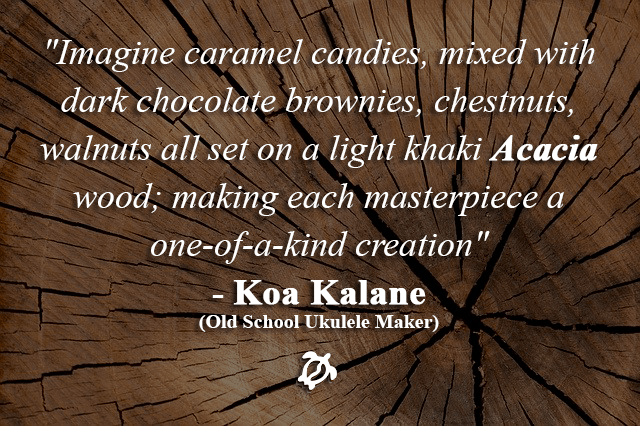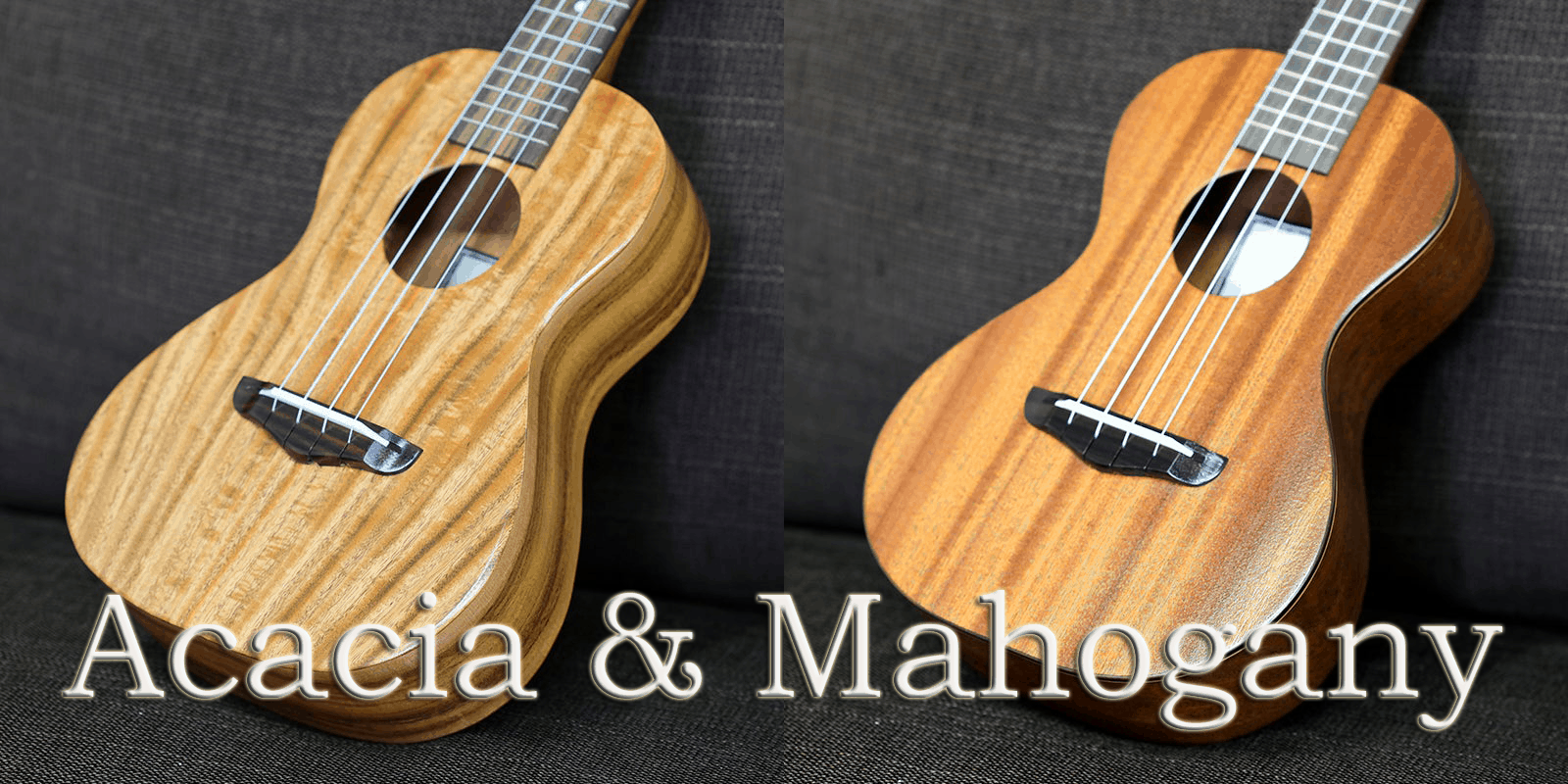Tonewoods are definitely one of the major criteria when choosing a great ukulele. Although many varieties of woods do have this qualification, we also need to consider other grading such as durability, polishing, shaping and how the wood may react in different climax and many more.
Recent years, Acacia wood has gained their popularity, winning over Mahogany. One of the acacia wood also known as “Acacia Koa” or “Blackwood” is very similar to the Hawaiian Koa wood in every area.
Which also opened a brand new market in the music industry in competing with Mahogany and Rosewood. Not only because of the beauty, also the wood tone is magnificent.
The Market Prefer Acacia
Guitar and ukulele shoppers often seek acacia koa as their top choice material for their music instruments. In fact, surprisingly, some don’t even understand the true benefits of the wood. They probably read online or heard from a friend saying how brilliant and crispy the sound is when compared to mahogany wood or any other woods.
But we must agree the beauty of this acacia wood really captured people’s attention. And guess what? These people end up making a great choice because acacia wood is truly one of the best wood choices you can buy for any guitar or ukulele.
Acacia wood is naturally hard and extremely durable and they have been around for more than 20 million years. For people who knows about this beautiful acacia wood, many may remember them having a lot of thorns often known as “thorn tree”, “wattles” or “whistling thorns”.
And because there are about 1300 varieties of what is loosely named “Acacia”, some acacia from Africa do not contain thorns, and some bears pods which release tannins. In the old days, tannins were used for medicinal purposes and to help food preservative. Some acacia trees may even be resistant to fire.
Throughout the years, Australia acacia melanoxylon is the species most well known in making furniture. This acacia wood, sometimes called Blackwood. As times go by, more new species have been discovered and merged together and the tone is very similar to Acacia Koa.
Many people purchase a ukulele made of acacia wood for a few reasons. The wood has a natural nice polish after the cut, and a sweet aroma smell of it. The wood can look natural light or dark in color, depend how the finishing work.
For lighter color, often will use lime wash in making the instrument look smoother and more appealing with the wood grain patterns. The darker color will look quite similar to Mahogany color.
If you’re looking for ukulele with reliable durability, resistant to wear and tear, yet attractive natural wood color and patterns then acacia wood shall meet your needs.
However, this does not mean that it is immune to damage. If you drop something heavy on your acacia ukulele, it is possible that it will leave a mark. So, take great care of your acacia ukulele and you will discover the beauty of this stunning wood has a lot of great value.
Describe Acacia Wood?
Acacia

Acacia, superior by far and stronger than most. Looking at the unique blend of shades and the fanciful grain patterns, you will understand how this solid Acacia instrument is strong enough to draw your attention.
Time tested and weather weary, the Acacia gets its reputation as being sturdy and resilient. A choice of light to dark shades of brown in its grain will create a stunning geometry of color that will catch every visionary eye.
Well invested time with this fine craftsmanship will unlock; appreciate and realize the value of this masterpiece. The finishing exposes the grain and gives it a unique texture making it appear antique yet modern.
Describe Mahogany?
Mahogany

Mahogany is a rare wood, known for its beautiful grain and deep reddish brown color. It’s one of those famous wood materials that is just classic. This durable hardwood has long been used to make some of the finest furniture and instrument in the world.
The best-known tropical wood by all means is Mahogany. For centuries Mahogany has been a traditional wood for making premium products, equally loved by carpenters, musicians and furniture owners. Unfortunately, mahogany is becoming rarer.
Mahogany is the most versatile and durable of all the hardwoods. It is relatively soft and pleasant to work with. This gorgeously dark, red-brown colored tropical wood that is resistant to insects and rot, has an attractive grain, and polishes to a beautiful high sheen.
Caring for Acacia & Mahogany Woods
3 Basic Caring Tips
- Clean it after each play. A simple wipe-down with soft cloth (avoid anything rough or harsh, including paper towels). This wipe-down will prevent your sweat, body oil getting mixed with dust in degrading your ukulele.
- Store it properly. Temperature is the big issue with storage. Avoid leaving it with direct sunlight or heated area. Avoid leaving it in a hot car or trunk. Cold area is less of a problem. Invest in a bag or case to protect from dust and bump.
- Maintain the right humidity. All wood reacts to the surrounding environment. If the air is extremely dry, the wood can crack. Invest in a humidifier to resolve the issue. If the air is very damp, the wood can warp. Placing some silica gel packs can be helpful. But paying close attention will allow you to respond with correct action.
Final Words
We must keep in mind one important aspect, when making a musician’s instrument, having the best wood does not equal to the best music tone. It is really about having a block of wood on hand and understanding how to adjust to the wood in making the best instrument out of it.
These woods are still alive. If you take good care of them, they will take good care of you. Learn and understand your equipment in bringing out their untapped potential. Hope to see you in our next blog. Mahalo!
